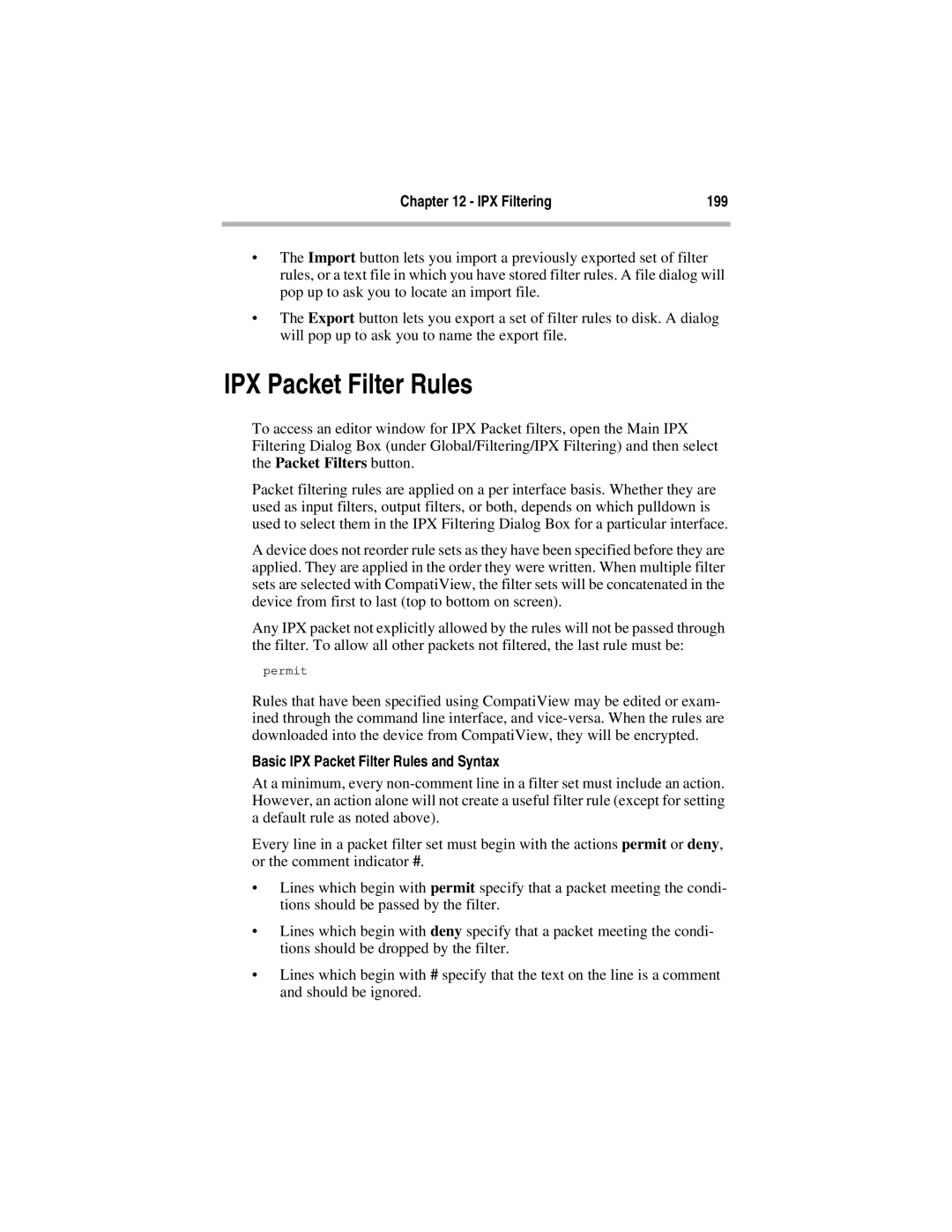Chapter 12 - IPX Filtering | 199 |
|
|
•The Import button lets you import a previously exported set of filter rules, or a text file in which you have stored filter rules. A file dialog will pop up to ask you to locate an import file.
•The Export button lets you export a set of filter rules to disk. A dialog will pop up to ask you to name the export file.
IPX Packet Filter Rules
To access an editor window for IPX Packet filters, open the Main IPX Filtering Dialog Box (under Global/Filtering/IPX Filtering) and then select the Packet Filters button.
Packet filtering rules are applied on a per interface basis. Whether they are used as input filters, output filters, or both, depends on which pulldown is used to select them in the IPX Filtering Dialog Box for a particular interface.
A device does not reorder rule sets as they have been specified before they are applied. They are applied in the order they were written. When multiple filter sets are selected with CompatiView, the filter sets will be concatenated in the device from first to last (top to bottom on screen).
Any IPX packet not explicitly allowed by the rules will not be passed through the filter. To allow all other packets not filtered, the last rule must be:
permit
Rules that have been specified using CompatiView may be edited or exam- ined through the command line interface, and
Basic IPX Packet Filter Rules and Syntax
At a minimum, every
Every line in a packet filter set must begin with the actions permit or deny, or the comment indicator #.
•Lines which begin with permit specify that a packet meeting the condi- tions should be passed by the filter.
•Lines which begin with deny specify that a packet meeting the condi- tions should be dropped by the filter.
•Lines which begin with # specify that the text on the line is a comment and should be ignored.
